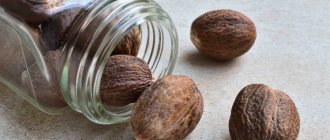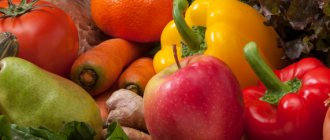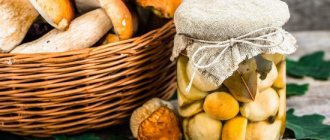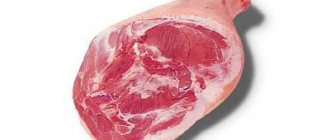Ancient food
Content:
- Ancient food
- Plant characteristics
- The nutritional value
- Benefit for health
- Side effects
- Beans as food
- How to cook beans correctly
- Medicinal properties
- Other Benefits of Beans
Before spreading throughout Western Europe, beans grew in the Middle East for almost 8 thousand years. Active cultivation of the plant began around 6800-6500 BC. It is considered one of the oldest plants grown in Ancient Greece and Rome.
Archaeologists find fossilized beans in Bronze Age layers. There is a mention of this vegetable in the Bible. During Solomon's time, Palestinians grew large quantities of beans for food. But in Ancient Egypt, because of the black and white color of the flowers, the plant was treated with superstition and fear. It was believed that the souls of the dead “live” in these flowers. According to some reports, in ancient times, bean porridge was a traditional dish at funerals.
The ancient Greeks and Romans knew this vegetable and eagerly consumed its fruits, and in times of famine they used bean flour. But at the same time, they did not forget to “appease” the gods by bringing them a sacrifice in the form of bean porridge. In some religious rituals, ancient priests used bean jelly. But there is a legend according to which Pythagoras and some representatives of the ancient Greek nobility categorically refused beans as food that could dull thought and cause insomnia. Meanwhile, another famous Greek, Dioscorides, used beans boiled in vinegar as a medicine against dysentery and other intestinal diseases. There is also information that the ancients used bean flour to treat nausea, cakes with honey helped against abscesses, and an infusion of crushed fruits was used to combat cataracts.
At all times, this plant was revered in the territory of modern Germany, where the custom of baking a New Year’s pie with a bean hidden in the dough has been preserved to this day: whoever gets a piece of the vegetable will be the “king” of the evening. It is believed that Charlemagne, who brought the seeds of the plant from his campaign, taught the Franks to eat this product. And the ancient Scandinavians believed that beans were brought to earth by the thunder god Thor, the son of the main deity Odin.
Beans were also revered in Rus'. There are references to this culture in ancient chronicles. True, with the advent of potatoes, green pods lost their popularity a little.
What is the bottom line – are legume products healthy?
Legumes are ideal to add to dishes; they can also be eaten separately, but the main thing here is not to overuse them. On the one hand, legumes prevent the development of diabetes, cardiovascular diseases and cancer. On the other hand, legume products have side effects and contraindications. Among them are problems with the gastrointestinal tract, gout, allergies. But, in general, legumes contain many valuable substances, minerals and vitamins - they cleanse the intestines, remove toxins, keep the immune system in good shape and reduce appetite.
More about training, nutrition, sports medicine and sports as an activity - in the “Health” section
Subscribe to the Sports.ru telegram channel about health
Photo: unsplash.com/v2osk, Miguel Andrade, Edgar Castrejon; globallookpress.com/J. Pfeiffer/https://imagebroker.com/#/search/
Plant characteristics
Faba beans are an annual, upright herbaceous crop, reaching 90-120 cm in height. Stems are bare, bluish-green. Gray-green oval leaves reach 10-25 cm. The flowers of this plant are white with black dots. The pods are flat and wide, growing up to 4-10 cm. Young pods are light green, old ones acquire a blackish-brown color. The seeds are ovoid, oblong, with a diameter of 1 to 3 cm. Depending on the variety, they can be white, yellow, green or pink-red. As a rule, they have a sweet, delicate juicy taste. In our latitudes, the most common bean varieties are Russian Black, Belorussky, Velena, Aushra, and Yantarny.
Distinctive features of the legume family
The legume family has two forms: herbaceous and woody.
The forms, in turn, are divided into three subfamilies according to the structure of the flower: mimosa, caesalpinia and legume. Caesalpinia and mimosa plants live only in warm climates, and legumes grow throughout the globe. These include well-known forage and vegetable crops: peas, beans, beans, soybeans, chickpeas, peanuts, alfalfa and clover.
All representatives of legumes have a distinctive fruit structure - a pod. When ripe, the pod opens at one or two seams. Beans come in a wide variety of shapes and sizes.
The leaves of most representatives of legumes are complex: pinnate or palmate, arranged in pairs, from one to twenty pairs.
A feature of the roots of leguminous plants is the presence of tubers, which are colonies of nitrogen-fixing bacteria that penetrate from the ground into the roots and cause the growth of the root system.
The nutritional value
Beans are a valuable source of protein and fiber.
100 grams of fruit contain 62 kcal, as well as almost 8% of the daily intake of carbohydrates, 1.4% of fat and almost 10% of the recommended daily intake of protein. In addition, beans serve as an exceptional source of nutrients. A serving of vegetables contains approximately 9.5% of essential fiber, almost 36% starch, 19% iron, 11.5% manganese, 10.5% phosphorus, as well as a complex of important vitamins. For example, a 100-gram serving of green beans provides about 14.5 percent of the recommended daily intake of folic acid. Nutritional components (per 100 g raw product)
| Calorie content | 62 kcal |
| Water | 83.7 g |
| Squirrels | 4.8 g |
| Fats | 0.5 g |
| Carbohydrates | 10.1 g |
| Cellulose | 3.6 g |
| Iron | 1.5 mg |
| Manganese | 0.26 mg |
| Phosphorus | 73 mg |
| Magnesium | 31 mg |
| Copper | 0.06 mg |
| Zinc | 0.5 mg |
| Potassium | 193 mg |
| Sodium | 41 mg |
| Selenium | 1 mcg |
| Calcium | 18 mg |
| Folic acid | 58 mcg |
| Vitamin B1 | 0.13 mg |
| Vitamin B2 | 0.09 mg |
| Vitamin B3 | 1.2 mg |
| Vitamin B5 | 0.07 mg |
| Vitamin B6 | 0.03 mg |
| Vitamin C | 19.8 mg |
| Vitamin A | 14 mcg |
| Saturated fatty acids | 0.14 g |
| Polyunsaturated fatty acids | 0.3 g |
| Monounsaturated fatty acids | 0.02 g |
Benefit for health
Beans are one of the foods that have tremendous health benefits. They contain rich supplies of fiber and protein. This vegetable contains an amino acid necessary for the production of dopamine, a chemical produced by the brain and important in the prevention of Parkinson's disease. In addition, fava beans contain virtually no fat or calories, and their rich supply of fiber makes them a great remedy for high cholesterol.
Boosting immunity
Vitamin C (found in beans) promotes the production of white blood cells - leukocytes (protect the body from free radicals), as well as immune cells. Ascorbic acid is an antioxidant that prevents oxidative processes and promotes the activity of leukocytes.
In addition, it is well known that this acidic vitamin counteracts colds and helps prevent illness.
Prevention of anemia
Anemia, or anemia as it is also called, is the result of low hemoglobin and a lack of red blood cells in the blood. This leads to deterioration of brain function, decreased immunity, and general weakness. Researchers estimate that in almost half of cases, anemia occurs due to a lack of iron in the diet. Beans (100 g) supply about one and a half grams of this mineral, which is a good indicator.
Prevents cancer
Scientists say DNA damage is one of the causes of cancer. Vitamin B9 (folic acid) prevents this process and strengthens DNA. Low levels of vitamin B9 increase the risk of breast, cervical, colon, lung cancer, as well as malignant tumors in brain tissue. Since beans provide adequate amounts of folic acid, they should be included in the diet.
"War" on free radicals
Manganese, which has antioxidant properties, helps remove free radicals from the body. For this reason, adding manganese-containing foods (such as beans) to your diet can help prevent many serious illnesses.
Protection against osteoporosis
Beans contain minerals that help strengthen bone tissue. Thus, these green vegetables are an excellent remedy against osteoarthritis, osteoporosis and other bone diseases.
Improves sleep
Tryptophan, present in beans, has a sedative effect and helps ensure sound sleep. This substance is also useful as a means for general strengthening of the body, improving memory, and getting rid of depression.
Eye health
Studies have shown that thiamine (vitamin B1) has the ability to prevent eye problems and prevent cataracts and glaucoma. This effect is achieved as a result of the vitamin’s effect on nerve endings, which are important for the exchange of impulses between the brain and eyes. A serving of beans contains at least 10 percent of the daily value of thiamine.
Anti-caries agent
Phosphorus is known to help maintain healthy teeth and gums. In combination with vitamin D and calcium, this effect is only enhanced. The named substances are sufficiently contained in the fruits of green beans. This means there is reason to claim that this vegetable is important for maintaining the health of tooth enamel, tooth strength, and tissue mineralization. Adequate intake of these nutrients is especially important for children during the period of growth and tooth formation. In addition, legume foods can serve as a cure for gum inflammation.
No strokes!
Research shows that people with enough vitamin C are 42 percent less likely to have a stroke. Adding vegetables and fruits rich in ascorbic acid to your diet will reduce your chances of getting sick. Beans are great for this.
Brain performance
Brain activity directly depends on the amount of oxygen supplied to the cells. Lack of iron leads to a deterioration in the transport of oxygen throughout the body. As a result, activity decreases, memory deteriorates, and apathy appears. People whose brains don't get enough O2 tend to be restless, irritable, and inattentive. Beans included in the diet will help restore a healthy state.
High Cholesterol Remedy
Nutritionists have calculated that it is enough to consume 100-150 g of beans daily to reduce cholesterol levels. Experiments have shown that a noticeable improvement occurs after 2 weeks of such treatment.
What are legumes best suited for - weight loss, muscle gain, healthy nutrition?
In general, a large amount of fiber in legumes improves digestion and cleanses the intestines, but here you need to know when to stop – its excess will lead to gas formation, diarrhea and a deficiency of fat-soluble vitamins A, D, E.
But complex carbohydrates in legumes will “save” you from overeating - they work “slowly”, that is, the feeling of fullness lasts longer. Simple carbohydrates, by comparison, immediately increase sugar levels, that is, they give a sharp boost of energy - and, if not used up, it will be deposited in fatty tissues.
How many calories should you eat to lose weight? Calculate in a special calorie calculator
Proteins are made up of amino acids and, unlike carbohydrates, are stored in the muscles. But gaining muscle mass only with the help of legumes, that is, plant proteins, will be difficult - the full composition of amino acids cannot be found in their composition (with the exception of soy). Therefore, it is important to combine legumes with cereals and sources of animal protein (meat, cottage cheese, eggs).
Side effects
In addition to the long list of benefits, beans also have some side effects on the human body.
In some cases, allergic reactions to the consumption of legumes are possible. Meanwhile, this is not such a common problem, but is the result of a genetic disease, which in medical reference books is called favism or primaquine anemia. Symptoms of not accepting beans: bloody urine, dizziness, vomiting, jaundice.
Beans also contain a large amount of complex carbohydrates, particularly fiber. Therefore, excessive consumption of the product can cause constipation and other disturbances in the process of digesting food. This vegetable is high in tyramine, which should not be consumed by people taking monoamine oxidase inhibitors. In addition, it is worth knowing that levodopa, contained in beans, affects the body's ability to absorb vitamin B6. Meanwhile, vegetables can cause vitamin deficiency only after regular consumption in extremely large portions. Also, these green pods are undesirable for gout, colic, intestinal inflammation, flatulence (aggravates bloating).
And it is strictly forbidden to eat raw fruits - they contain toxic substances that are destroyed only after heat treatment.
How to get the most out of legumes - some tips
- Legumes contain antinutrients - substances that interfere with the absorption of certain nutrients - calcium, iron, phosphorus and zinc. These include lectins, phytates, tannins. The “side effects” from them are not the most pleasant - gas formation, bloating - this can be avoided, but then the legumes need to be soaked for 8-12 hours;
- If you don’t have time to cook and soak, you can buy ready-made legume products - fresh or canned. They will only need to be washed;
- It’s better not to go too heavy on legumes – ½ cup is enough to replenish all the necessary valuable substances. Excess fiber in legumes will lead to gastrointestinal problems;
- It is ideal to store legumes in containers, away from sunlight - in a cool and dry place.
Beans as food
Not only beans are suitable as food. For health benefits you can consume:
fresh beans (boiled or steamed);- the upper part of young shoots (steamed);
- “milk” beans (consumed together with the pod);
- ripe fruits (dried, canned, boiled);
- legume flour;
- roasted beans (as a coffee substitute).
In addition, beans are excellent in soups, stews, poultry, lamb, and seafood dishes. They can be either an independent dish or a component of a more complex recipe.
For example, in northern Africa and the Middle East, beans are served with the traditional dish of couscous. In Egypt, they used to eat mashed beans and green parsley with bread. And stewed beans are a traditional breakfast for Moroccans.
Cons of legumes
- Fiber in certain cases can have an irritating effect on the gastrointestinal tract, so the consumption of legumes should be strictly moderate in people with diseases of the digestive system, and are not recommended during periods of exacerbation. In addition, the high fiber content can cause flatulence.
- Despite the protein content, vegetable protein cannot fill the entire need for essential amino acids, and therefore is not complete.
- Phytic acid compounds in legumes may have a negative effect on calcium absorption.
- Legumes are a source of purine compounds, therefore they are not recommended in case of gout, as well as urolithiasis.
Like any food product, legumes have their pros and cons. With all this, it is justified to replace meat dishes once or twice a week with legume dishes due to their nutritional value, low fat content and the presence of fiber, which in turn has a positive effect on health in the absence of contraindications.
Medicinal properties
In folk medicine, beans are often used as medicine with a wide range of effects on the body. Dishes made from this vegetable are useful for people with:
- diabetes;
- vitamin deficiency;
- obesity;
- kidney dysfunction;
- liver dysfunction.
Beans are useful for heavy mental and physical work. They have diuretic, choleretic, astringent, and anti-inflammatory properties. Removes toxins and heavy metal salts from the body. A decoction of young shoots is useful for dropsy.
Decoction for cleansing the body
Pour two cups of boiling water into 2 tablespoons of beans and steam for about 10 minutes. Divide the cooled drink into 4 servings and drink throughout the day.
Medicine for uterine fibroids
For this medicine you will need beans roasted and ground in a coffee grinder. Brew according to the principle of regular coffee. Drink 1 cup of coffee after meals.
Skin cleansing infusion
Pour 1 tablespoon of bean flowers into a glass of boiling water. Leave for at least 2 hours. Strain. Use to wipe problem skin.
Remedy for boils
Boil the beans in milk, grind into a paste. Such vegetable compresses are useful for boils, abscesses, and vitiligo.











